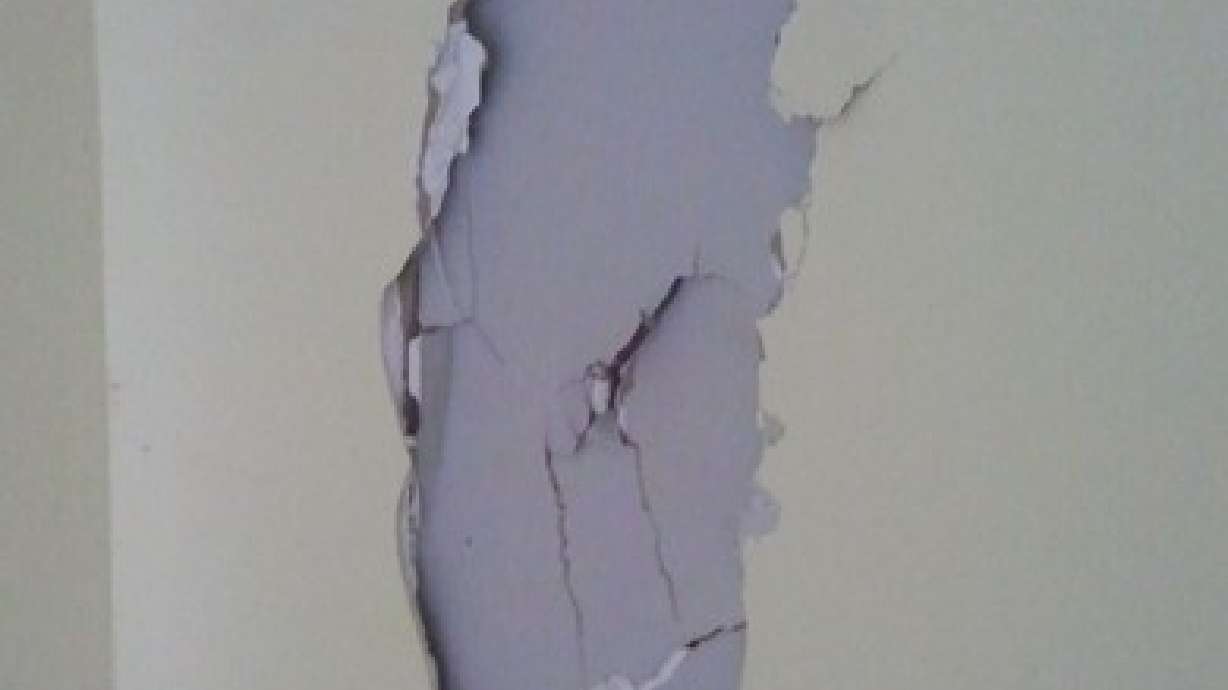Estimated read time: 4-5 minutes
This archived news story is available only for your personal, non-commercial use. Information in the story may be outdated or superseded by additional information. Reading or replaying the story in its archived form does not constitute a republication of the story.
SALT LAKE CITY -- There is perhaps no greater fear in potential home buyers than meth contamination. As a home inspector, I have been told by many would-be homeowners that they would never buy a meth-contaminated home. These same individuals are unaware that they have likely been in many contaminated homes while searching for a new home.
The Basics
The definition of “contamination” varies from one state to another, and from one date to another. Utah’s current threshold for meth contamination is 1.0 microgram per 100 square centimeters (See www.health.utah.gov/meth/html/Decontamination/index.html.) This is the equivalent of a grain of salt spread over an area roughly the size of the palm of your hand. If the contamination from any sample in the house is greater than that, the State of Utah considers the entire home to be legally contaminated. If the measured value is less, according to state law the home is acceptable.
If you are considering a home purchase, there are professionals who know exactly where and how to test. It is clear however that no one is able to test every home before entry, so the key question is “How can I spot a potentially meth-contaminated home?”
It is important to state that the official answer is: You can’t. A test must be conducted. That said, my experience as a home inspector and Utah state-certified meth-decontamination specialist may help shed light on the subject. There are common characteristics found in many meth-contaminated homes. These are signs of anger, signs of neglect and signs of income stress. We will start with the last one first.
Income Stress
The homes that are most likely to test positive for contamination are small homes and apartments. Most of the time, these are foreclosures or short sales. I know an individual who used to be very much into the meth scene (who I will keep anonymous) and his explanation for that is simple: A user’s money goes to the drug first. Keeping your home or apartment is a second priority, and often there is not enough money for both.
Neglect
It is common to walk into home that I know to be contaminated and find heavy staining. The stains can be on the carpets, walls or ceilings. I often see scrawls on the walls and cabinets, and signs of shabby living everywhere. A certain amount of this is intuitive: The user is high. A person who is high is less likely to take care of the children and much more likely to spill whatever they may have. In most of the meth-contaminated homes I have seen, cleaning is not a priority.
The other side of the coin is this: Investors will often buy a trashed home and “flip” it. This means that what used to be a disgusting home is now beautiful. It has new carpet and paint, perhaps even new tile and cabinets. But despite the renovations, the home is still contaminated because the areas most likely to be contaminated have not been addressed.
Anger
While the first two clues are more commonly known, few people seem to know the last clue. Here it is: doors. Look at the doors and door frames. Are the doors abused? Are there holes in the doors? Are the frames damaged? Look for cracks in the frame near the latch plate. Are there other signs of anger such as holes in the sheetrock? Meth users can gain superhuman strength, and with that comes superhuman anger. The meth habit often shows physical clues on the bedroom doors, the front door or the door to the garage.
If you are looking for a home, you cannot simply rely on your home inspector to pick this up. Chances are your inspector may not know what you just learned. If you visit homes as a social worker, teacher, religious representative, policeman or contractor, these are clues you can look for without tipping your hand. And if you work in the heating and cooling business, your hands are right there in the stew.
Be careful about how you use this newfound knowledge. Just because a home fits this description is not proof that it is contaminated. If a home doesn’t meet this description, that is not proof that the home is free of problems. The only way to know for certain is to test. Certified meth-decontaminations specialists can tell you for certain if there is contamination. For a list, visit www.superfund.utah.gov/docs/ContractorList.pdf.
If you have considerable physical involvement with a particular home, use this information to screen a home. But when in doubt, do the test.
Garth is a Utah-certified meth decontamination specialist, home inspector and environmental engineer. Download Garth's "Household Hazards Handbook" at crossroadsengineers.com. For other articles, like Garth Haslem—the Home Medic on Facebook.









